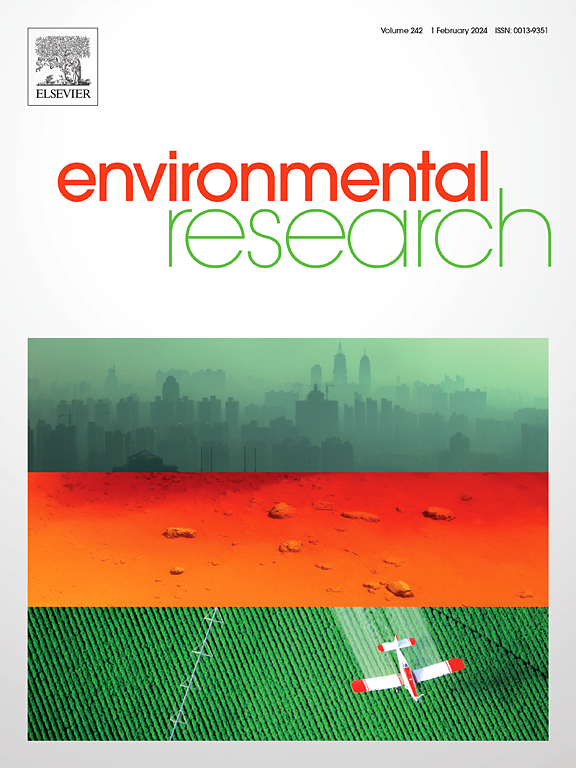Occurrence of organophosphate esters (OPEs) in tobacco leaves across China: Spatial distribution, sources and exposure risk assessment
IF 7.7
2区 环境科学与生态学
Q1 ENVIRONMENTAL SCIENCES
引用次数: 0
Abstract
Plastic mulch is widely used in tobacco cultivation, resulting in the release and transfer of organophosphate esters (OPEs) into tobacco leaves. Herein, 44 samples of tobacco leaves were collected from 18 provinces of China in 2023. The total concentrations of 8 OPEs (∑8OPEs) were in range of 12.6 ng g−1 - 402 ng g−1 dry weight (dw). Tris(2-chloroethyl) phosphate (TCEP) was the predominant OPE detected from all the tobacco samples with a mean of 51.2 ng g−1 dw. OPEs with high water solubility were more likely to accumulate in tobacco leaves. High ∑8OPEs in tobacco leaves was observed in eastern and middle China. OPEs were primarily derived from the release of plastic mulch (86.8 %) and atmospheric precipitation (13.2 %). The hazard index of 7 OPEs in each leaf sample was far less than 1, posing a negligible non-cancer risk. Besides, the carcinogenic hazard indexes of TCEP, tributyl phosphate (TNBP) and tris(2-ethylhexyl)phosphate (TEHP) were less than 1 × 10−6, suggesting a low cancer risk of these OPEs. The present study firstly provides new perspectives on the occurrence, sources and risks of OPEs in tobacco leaves.
中国烟叶中有机磷酯(OPEs)的分布:空间分布、来源及暴露风险评估
塑料覆盖在烟草种植中广泛应用,导致有机磷酸酯(OPEs)释放和转移到烟叶中。本文于2023年在中国18个省份采集了44份烟叶样本。8种OPEs(∑8OPEs)的总浓度在12.6 ~ 402 ng g−1干重(dw)之间。三(2-氯乙基)磷酸(TCEP)是所有烟草样品中检测到的主要OPE,平均值为51.2 ng g−1 dw。水溶性高的OPEs更容易在烟叶中积累。中国东部和中部烟叶∑8OPEs较高。OPEs主要来源于地膜的释放(86.8%)和大气降水(13.2%)。每个叶片样品中7种OPEs的危害指数远小于1,其非致癌风险可以忽略不计。此外,TCEP、磷酸三丁酯(TNBP)和磷酸三(2-乙基己基)磷酸(TEHP)的致癌危害指数均小于1 × 10−6,表明这些OPEs的致癌风险较低。本研究首次为烟叶中OPEs的发生、来源和风险提供了新的视角。
本文章由计算机程序翻译,如有差异,请以英文原文为准。
求助全文
约1分钟内获得全文
求助全文
来源期刊

Environmental Research
环境科学-公共卫生、环境卫生与职业卫生
CiteScore
12.60
自引率
8.40%
发文量
2480
审稿时长
4.7 months
期刊介绍:
The Environmental Research journal presents a broad range of interdisciplinary research, focused on addressing worldwide environmental concerns and featuring innovative findings. Our publication strives to explore relevant anthropogenic issues across various environmental sectors, showcasing practical applications in real-life settings.
 求助内容:
求助内容: 应助结果提醒方式:
应助结果提醒方式:


